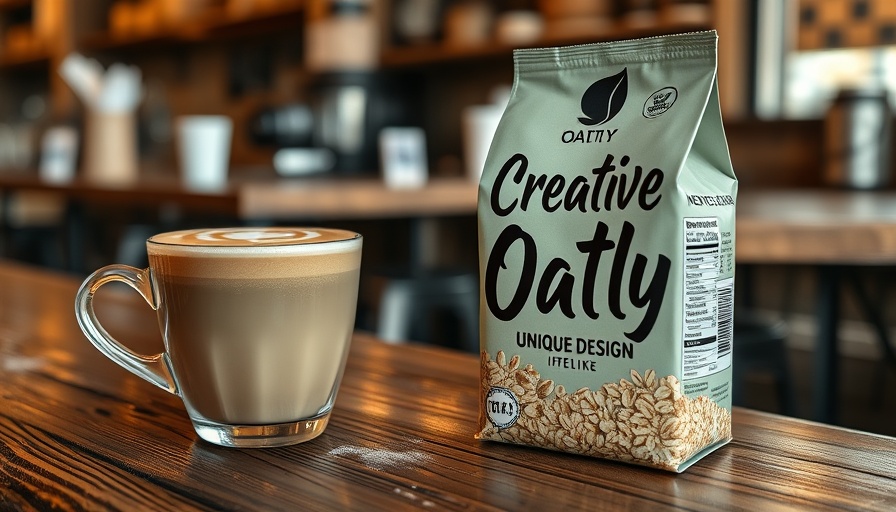
How Oatly Challenges Beverage Norms Through Unique Branding
In today's saturated market, where brands often dilute their identity to match growing expectations for technology and uniformity, Oatly stands as a refreshing example of authenticity. The Swedish oat milk brand has carved out a niche with its quirky packaging and clever copy, appealing not only to consumers' palates but also to their sense of humor.
The Power of Packaging in Brand Identity
Malia Killings, Oatly's North America Creative Director, emphasizes that the original designs of Oatly’s packaging were central to the brand's emergence. “Everything started from the packaging and has grown from there,” she explains. This is particularly important as Oatly has seen a shift from traditional milk cartons to recyclable plastic bottles. The challenge was ensuring the new containers could still convey the playful Oatly voice which has become emblematic of the brand. This understanding of packaging not only as a vessel but as a canvas showcases how crucial visual aspects are in retaining brand identity amidst changes.
Crafting Authentic Experiences in Digital Spaces
In a digital era where the norm often leads to templated descriptions and generic marketing approaches, Oatly leans into originality. While many companies favor data-driven decisions that can risk uniformity, Oatly makes choices grounded in maintaining its brand voice. This commitment shines through in various platforms, such as their witty product descriptions on grocery sites like Kroger, which include personalized touches like "You’re also on Kroger today! That’s so great. Nice to see you here." Such attention to detail isn't just fluff; it's a strategy for distinguishing themselves in competitive online retail environments.
Aligning Creative Strategy with Consumer Connection
For Oatly, the goal extends beyond merely selling oat milk; it's about forming a genuine connection with customers. In a world increasingly influenced by AI and automated marketing, Oatly’s approach is refreshing. Instead of deploying AI-generated content that may lack a human touch, they focus on authenticity. That means crafting unique narratives that resonate with their audience, demonstrating a brand personality that consumers can relate to. As Oatly navigates through both online and offline markets, its creativity is not just an accessory but a core component of its brand strategy.
Future Insights: Staying Ahead in a Competitive Market
As brands like Oatly continue to evolve, the future of marketing will likely require a delicate balance between authenticity and technological advancements. By holding onto its unique voice and approach, Oatly may set a precedent for how brands can thrive without sacrificing their identity. In a marketplace saturated with AI tools and automated strategies, the need for genuine connections remains paramount.
What Automotive Brands Can Learn From Oatly
Draw parallels to the automotive industry where dealership principals, GMs, and Fixed Ops Directors can take notes from Oatly’s branding strategies. Just as Oatly refuses to conform to the templated marketplace atmosphere, car dealerships should also strive to maintain their unique selling points. Creative merchandising coupled with authentic storytelling can resonate well with consumers looking for genuine experiences rather than mere transactions.
Brands in the automotive space can leverage Oatly's strategies by employing targeted social media campaigns that highlight their unique offerings, thus creating a personalized experience for consumers. Training sessions that emphasize innovative marketing techniques can also empower staff to think creatively with their approaches, ultimately improving customer engagement.
In conclusion, Oatly's commitment to originality emphasizes a crucial learning point for marketers across industries: authenticity reigns supreme. As technology continues to advance, brands should focus on what makes them unique, crafting experiences that resonate personally with consumers. Now is the time for businesses not just to sell products, but to tell stories that invite customers into their worlds.
 Add Row
Add Row  Add
Add 




Write A Comment